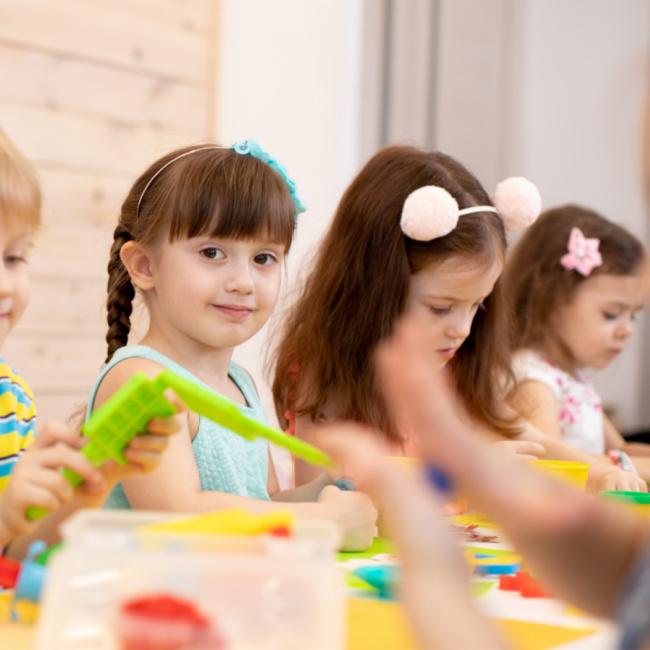How to Succeed at Distance Learning Without a Desk
How to Succeed at Distance Learning Without a Desk
If you are starting school virtually at home this year, how do you succeed at distance learning without a desk? These tips are adaptable for pretty much any space!
As we prepare for a new school year, many of us are embracing distance learning again. As Pinterest and Facebook flood us with images of beautiful school desks set up for learning, you might be wondering what’s wrong with learning from the couch. Does your child really need a desk for distance learning? Do you have room for another desk? How can you set up a learning space for your child when you don’t have any extra space?
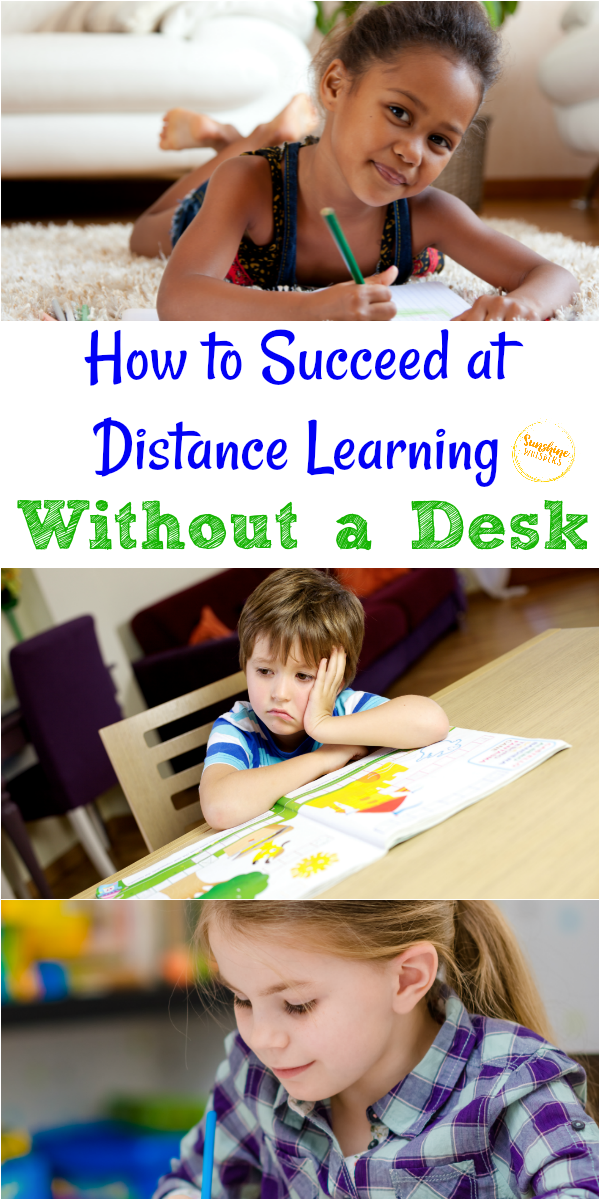
One thing is certain, 2020 has caused us to ask a lot more questions and make way more decisions about things we didn’t really think about before. So if you’re wondering whether to create a learning spot or set your kids up on the couch, keep reading for some great ideas about distance learning without the desk.
Why does my child need a designated learning spot?
Kids rooms are comfy and easy, there’s a couch, they even spend ½ their time laying on the floor… do we really need a specific spot for distance learning? While all of those options can work just fine, they might not be the best choices for your kids this year.
Without a specific space for distance learning, young children can become distracted. Having a space for learning helps establish a routine, gives kids a place to keep learning materials, and helps keep kids focused on learning.
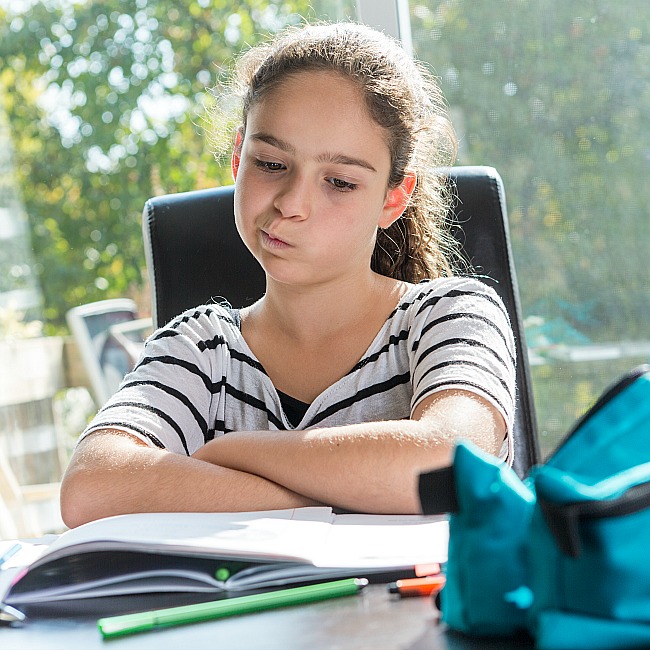
Don’t get sucked in by Pinterest.
Those homeschool rooms on Pinterest are beautiful and intoxicating, but they’re unrealistic for most of us. You don’t really need all that beautiful shiplap and IKEA furniture to have a successful learning space in your home. Your kids don’t need a miniature office in their bedroom.
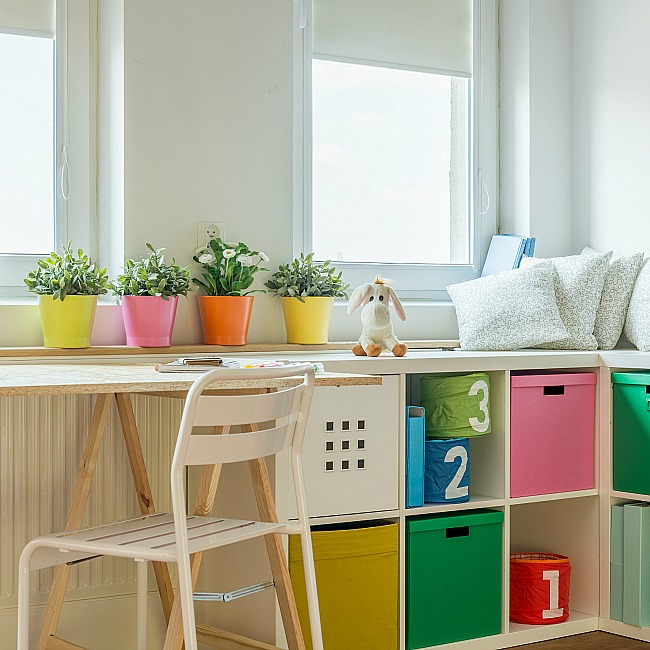
Begin by thinking about what your kids actually need, not the things you think they should have. First, think about your child’s learning style. Is your child a visual learner? Do you have an active kid who needs to move around a lot? Do they need seclusion to focus or does your child do better when someone is nearby? Thinking about the answers to questions like these will help you to create a space (even if it’s just a corner) where your child can really learn.
Remember, spaces can be flexible. It’s ok if your learning space is a designated lap desk in the living room or folding furniture you take out and put away each day. It’s alright if your child does better learning while bouncing on an exercise ball than sitting in a desk chair. Create a learning space that works for your family, whether it looks like the one on Pinterest or not.
Lighting Is Important
When creating a space for learning at home, it’s really important to have good lighting. Did you know that scientists have discovered low lighting in the classroom makes it difficult for kids to pay attention? Natural light is also really important. Having enough light affects your child’s energy, achievement, and attention.
Don’t have enough natural light in the room your child uses for distance learning? That’s ok, you can mimic natural light with well-placed mirrors.
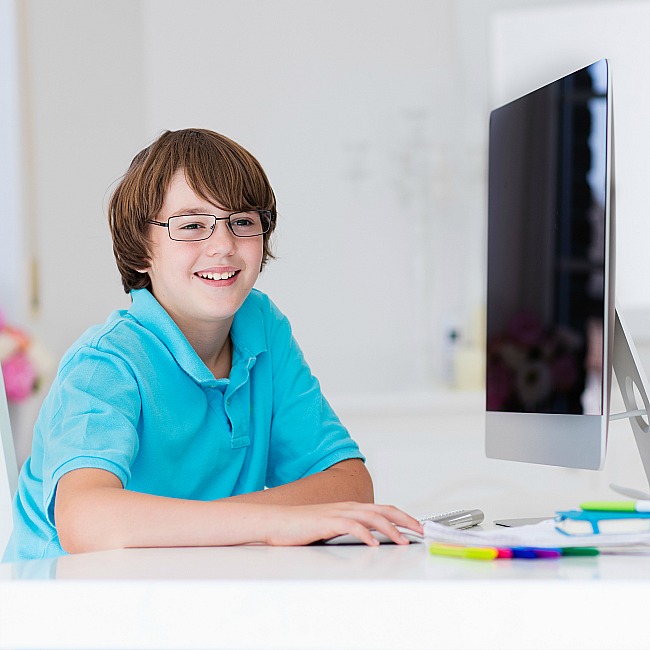
Be Ergonomic About Your Space
Don’t be afraid to skip a traditional desk. In fact, think about changing up the spots where your child will be learning. Choose spaces around your home that will support different positions for learning to keep your child moving. Set a timer and move to a different space when the time is up. You could choose to stand at the kitchen counter, sit at the table, and lay on the floor.
By changing your distance learning space, you’ll be encouraging your child to get up and move around. Physical activity stimulates blood flow, so it’s a good idea to encourage movement while you’re learning.
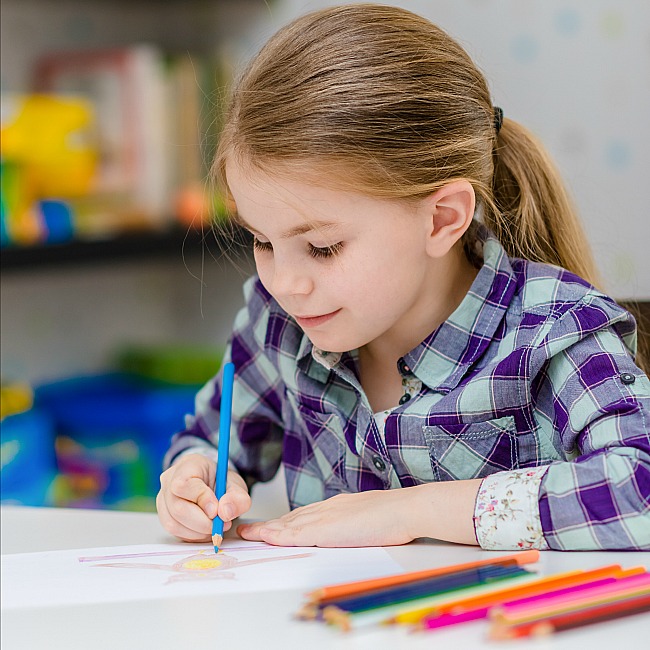
Give Your Kids Thinking Space
Create blank spaces or “whitespaces”. Don’t fill up your child’s distance learning space with too many visuals or stimulating knick-knacks. Kids need space to think off-screen so be sure to provide a space where they can detach from screens and express themselves.
Consider giving your child a blank page for notes, doodles, and brainstorming. Set up a large white posterboard to serve as a backdrop that won’t overstimulate your child while they’re trying to learn virtually.
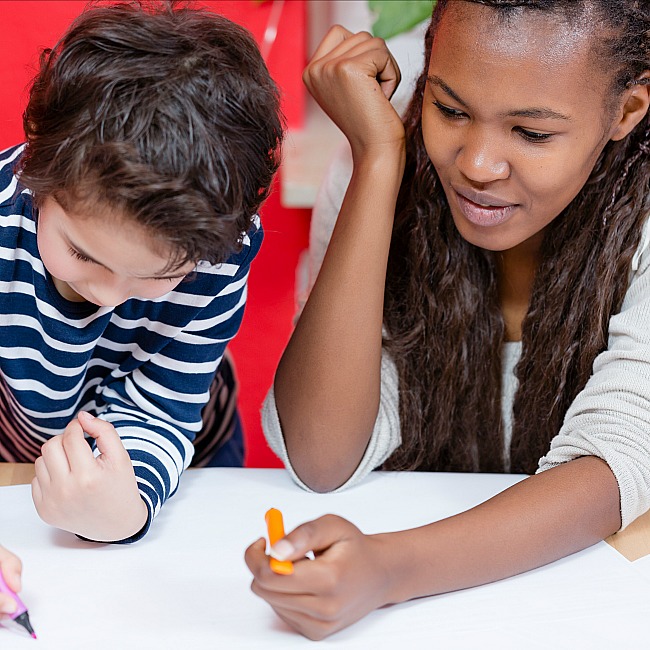
Finally, remember with distance learning it can be difficult and often impossible to set up a space identical to the classroom in your home. Certain important classroom design tips like creating whitespace, having the things your learner needs within reach, and choosing materials carefully can help you to create a space for distance learning at home.
Do you have ideas I didn’t mention for setting up a learning-friendly environment at home this school year? I’d love to read about your ideas and tips in the comment section, so don’t forget to share. Need more help getting ready for distance learning this school year? Check out my tips on keeping young learners engaged with distance learning platforms like Google Meet.
Check out these great back to school ideas too!
- How to get your kids excited about school
- Help Your Kids With Distance Learning This Year
- How kids can build community during times of isolation
- Set up a great homework command center!
- Tips for how to use your public library to help your kids in school
- Easy ways to get more involved at school this year
- Get to Know Your Child’s teacher with these simple tips


